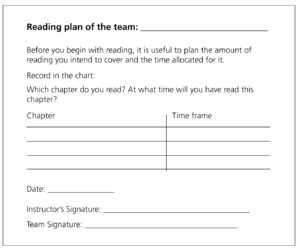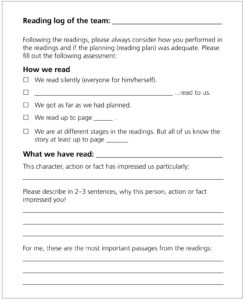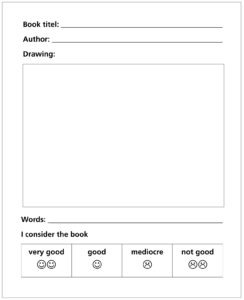Procedure:
- reading phase (for methodical procedures, see below)Variant 1: All students read the same book or text. This variant is attractive in terms of the common reading experience, but is presumed to be suitable for HLT only if the text is appropriate for all proficiency levels or if the class is not overly age- heterogeneous.Variant 2: The students read different texts about the same topic. An overarching theme in terms of the common reading experience might include “From the history of our country of origin”, “poems”, “non-fiction texts about our country”, “different texts by our poet XY”. The texts for these topics would have to be chosen according to age or proficiency level (e.g. three factual texts of various degrees of complexity about geography, three short stories of various lengths and complexity, etc.). The readings occur not in the class as a whole, but in three groups, according to age-, level and proficiency.
- Follow -up discussion, processingIn accordance with the chosen variant, the follow-up discussion may occur in the class as a whole (variant 1) or in the appropriate groups (variant 2). In the end, the reading experiences should be shared among all students, including the groups described in variant 2. In highly age-heterogeneous classes, younger students may profit and learn from the older ones by observing how they deal with texts and discuss what they have read.Variants and possibilities of follow-up discussions include: talks, pro/contra discussions, role play/stage presentation, written assignments, etc.
Methodological approach: how to read?
The traditional approach to reading aloud where each child reads a sentence or several sentences in turn is obsolete and should be avoided. This method does not improve reading competence nor heighten the motivation for reading. The differences in reading speed, ways of reading and reading competence are just too great.
The following variant is recommended: for reading, divide the students in teams of two or three. In selecting the teams, make sure that the individual team members have approximately the same proficiency level.
Before reading, each team creates a reading plan. After reading, students record in a reading log how they proceeded and what they consider the most important content. See the examples for a reading plan and reading logs in the following pages.
Teams that read fast or teams that have finished reading receive additional tasks, such as follows:
- Practice reading out of a chapter until you master it flawlessly. Create a recording. This can later be made available to your classmates.
- Summarize individual chapters and present them later, e. g., in form of a role play, a drawing or graph.
- Expand your knowledge of the topic; conduct additional research about the theme or the author.
Comments:
- The motivation for reading grows if students have a voice in the selection of the material. To this end, various texts or books should be made available (2-4 for each age- or proficiency level), to ensure that students have a real choice.
- It is imperative that reading in groups or as a class is practiced again and again, as it represents a good complement to and a change from the free reading sequences (see teaching suggestions #9).
Examples, reading plan, reading log:
These examples are only suggestions and can of course be modified. For the German language HLT, for example, the wording of the reading plan could be customized so as to reflect the familar „you“ (Du) address (second person singular as opposed to the second plural form (Ihr); which would be more appropriately used for individual readings* (Not applicable for English language version)


Example of a reading log (1st and 2nd grade)







